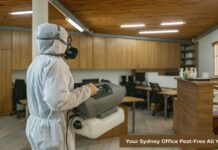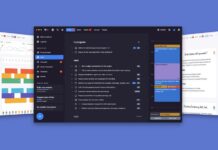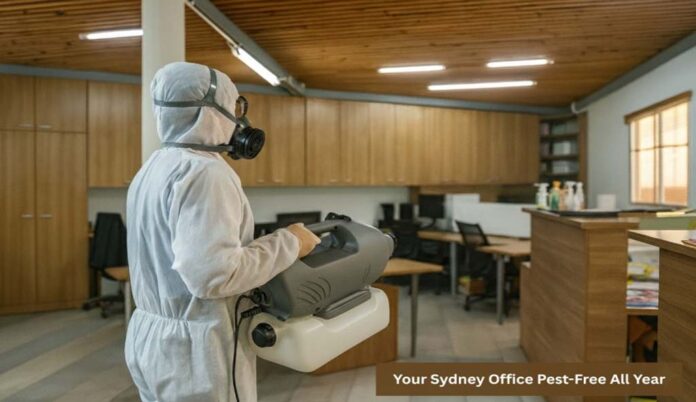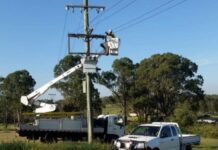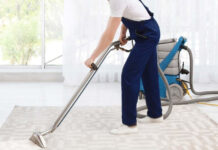Busy offices bring people, food, parcels and recycling into the same space each day. Crumbs, spills, warm equipment and open bins create easy food and shelter for pests. In multi-tenant buildings, activity in one suite can quickly affect the neighbours.
Sydney’s weather shifts across the year, from humid summers to cool, wet winters. Warmer months lift ant, fly and cockroach activity, while cooler spells push rodents to seek indoor shelter.
Why it matters
- Staff wellbeing – fewer allergies, bites and distractions.
- Hygiene and WHS – cleaner kitchens, safer shared areas, fewer complaints.
- Reputation and compliance – better audit outcomes and a professional workspace.
A simple, seasonal plan built on good hygiene and proofing, aligned with best practice in Pest Control Sydney, keeps risk low all year.
Know your risk profile before you plan
Start by sizing up how your building, fit-out and daily routines invite pests. A clear picture up front saves time later and helps you focus effort where it counts.
Building factors
- Age and condition of the structure, cracks and gaps around services.
- Nearby cafés or food courts, loading docks and landscaped areas.
- Neighbouring tenancies, shared risers and ceiling voids.
Fit-out factors
- Warm server rooms and comms cupboards.
- Kitchens, end-of-trip showers and lockers.
- Bin stores, storage rooms and spaces under appliances.
Occupancy factors
- Headcount, hot-desking and desk-eating habits.
- After-hours cleaners and contractors.
- Pet-friendly policies and how food is stored on site.
Create a simple risk map. Mark each area on a floor plan as low, medium or high risk. Prioritise hotspots for cleaning, proofing and monitoring, then set check frequencies to match the risk.
Seasonal action plan for Sydney offices
Plan the year in quarters so tasks never pile up. Use these quick checklists to schedule cleaning, proofing and monitoring ahead of the weather.
Summer
- Empty all internal bins nightly and wash bin rooms twice a week.
- Wipe appliance seals, mop up spills fast and keep floor drains clear.
- Check under fridges, dishwashers and vending machines for crumbs and moisture.
- Confirm door closers, flyscreens and air curtains are working.
- Increase evening cleaning of kitchens, end-of-trip areas and meeting rooms.
Autumn
- Seal gaps around pipes, cables and skirtings before cooler nights arrive.
- Service door sweeps and brush seals on external doors and loading docks.
- Trim landscaping, lift mats and remove leaf litter from carparks and entries.
- Review placement of monitoring devices and refresh baits or traps as needed.
- Audit waste routines so recyclables are rinsed and lids stay closed.
Winter
- Focus on proofing and building fabric to stop warm-air leaks that draw pests in.
- Inspect roof voids, plant rooms and risers for entry points and nesting signs.
- Run water in seldom-used sinks to keep P-traps wet and odours down.
- Clean under appliances and storage racks where heat collects.
- Reduce desk-eating with clear signage and offer more kitchen seating.
Spring
- Deep clean behind and beneath appliances, shelving and printers.
- Audit food storage, containerise open items and date-label shared pantry goods.
- Refresh staff training on spills, waste and how to report sightings.
- Recalibrate monitoring thresholds ahead of warmer months and update your service calendar.
- Check gutters and downpipes so stormwater drains freely.
Daily and weekly hygiene routines
Simple routines stop pests from getting a foothold. Use these habits every day and back them up with a weekly deep clean.
Kitchens and break areas
- Wipe benches, appliance seals and splashbacks after each use.
- Empty benchtop bins every night and wash them twice a week.
- Store cereal and snacks in sealed containers and label open items.
Desks and meeting rooms
- No open food at desks. Use the kitchen for meals.
- Wipe crumbs and soft drink spills before close of business.
- Check keyboards and under-desk bins during nightly cleaning.
Waste handling
- Line all bins, tie bags and remove daily.
- Keep lids closed and secure external bins from wildlife.
- Wash bin rooms weekly and mop floors with a disinfectant.
Deliveries
- Inspect cartons and pallets for damage or pest signs before entry.
- Break down cardboard quickly and remove it the same day.
End-of-day checklist (printable)
- Kitchen benches wiped, sinks clean, floor dry.
- All internal bins emptied and tied.
- Pantry items sealed and dated.
- Meeting rooms cleared of cups and food.
- Cardboard flattened and taken to recycling.
- Pest sightings logged and reported.
Structural and facilities hardening
Make the building harder to enter and nest in. Focus on gaps, doors and services. Plan fixes with your facilities team or landlord.
Seal penetrations
- Use fire-rated sealant around pipes, conduits and data cabling.
- Close gaps at skirtings, risers and service cupboards.
- Fit grommets or escutcheon plates. Expanding foam alone is not enough.
Door management
- Install and adjust self-closers so doors latch every time.
- Add brush or drop seals to external doors and roller shutters.
- Use air curtains or PVC strip curtains at loading docks.
Windows and vents
- Fit flyscreens on operable windows where suitable.
- Install weep hole guards that keep airflow while blocking pests.
- Mesh service vents to small apertures where code allows.
Roof, gutters and plant rooms
- Clear debris and repair flashing.
- Seal around HVAC penetrations and conduit entries.
- Fit pest-proof grates on overflow and drain points.
Carparks and landscaping
- Trim vegetation back from walls and remove leaf litter.
- Fix pooling water and irrigation leaks.
- Store goods off the floor and away from walls.
Food, storage and waste logistics
Tidy food areas keep pests away and make cleaning faster. Set simple rules and stick to them every week.
Pantry rotation
- Use FIFO in shared pantries so older items are finished first.
- Date-label opened packets and decant into sealed containers.
- Clear benches before close and keep shelves crumb free.
Vending and coffee stations
- Empty and clean drip trays daily.
- Wipe sugar stations and milk areas after each rush.
- Lift machines fortnightly to clean underneath and behind.
Cold storage
- Keep fridges and freezers at the correct temperature.
- Purge expired foods weekly and wipe seals and shelves.
- Store raw and cooked foods separately in sealed tubs.
Waste segregation
- Rinse recyclables before they go in the bin.
- Keep organics in lined, sealed bins and remove daily.
- For on-site cafes, follow the grease-trap service schedule and record each cleaning.
Moisture control and plumbing watch-outs
Moisture is the quickest way to attract pests. Keep water where it belongs and deal with leaks the same day.
Fix leaks fast
- Check sinks, dishwashers, fridge water lines and chilled-water units.
- Replace worn hoses and seals, tighten fittings and wipe up spills straight away.
Bathrooms and seldom-used sinks
- Run water weekly to keep P-traps wet and odours down.
- Look for drips at taps and flexi hoses, and report any pooling on floors.
HVAC and drains
- Inspect condensation pans and clear algae or sludge.
- Flush and clean floor drains, mop sinks and bucket wash areas.
- Keep wet mops and rags off the floor and hung to dry after use.
Monitoring, thresholds and documentation
Good records make faster decisions and better results. Keep monitoring simple and consistent so anyone can follow it.
Monitoring plan
- Place stations or traps on a floor plan and give each device an ID.
- Note the service frequency and who is responsible for checks.
- Record device type, bait used and any safety notes.
Action thresholds
- Set clear triggers such as more than two sightings in seven days in one zone.
- When a trigger is hit, schedule an inspection and corrective clean, then review proofing.
Pest log
- Capture date, location, pest or sign, and action taken.
- Add photos where helpful and track trends over time.
People and policy: build a pest-aware office culture
Set clear expectations from day one. Add a short induction slide that covers food rules, waste routines and how to report sightings. Maintain a practical and friendly tone to encourage people to follow through.
Everyday behaviours
- Desk dining is limited to tidy snacks. Use the kitchen for meals.
- Provide spill kits and wipes in kitchens and meeting rooms.
- Post reminder signs near bins and sinks about cleaning up and tying bags.
Teams and responsibilities
- Include under-appliance moves and behind-shelf cleans in contractor scopes.
- Add pest reporting to cleaner checklists with a simple log.
- Nominate a floor hygiene champion to monitor hotspots and share quick wins.
When to bring in the professionals
Bring in specialists when sightings repeat, when proofing is complex, or when audits require clear records. Offices typically require commercial pest control services because the work must be conducted in a manner that accommodates staff, meets WHS requirements, and is documented for compliance purposes.
Why commercial support suits offices
● Formal site risk assessments and safe work methods.
● Discrete scheduling for meeting rooms, kitchens and loading docks.
● Multi-site reporting so facility managers can track trends across locations.
How this differs from home services
● Residential services are built for single dwellings and family routines.
● Product choices, reporting depth, and visit frequency differ from office needs.
What a commercial program includes
● Initial inspection and a tailored IPM plan based on your risk map.
● A service calendar with device maps and responsibilities.
● SDS and service reports are completed after each visit, along with photos where helpful.
● Trend analysis and clear recommendations for cleaning and proofing.
Incident response: what to do if pests are spotted
Act quickly and keep it tidy. The goal is to remove attractants, document what happened, and reduce the likelihood of a repeat occurrence.
Immediate steps
- Isolate the area if practical and clean nearby surfaces.
- Remove food, rubbish and standing water.
- Photograph the sighting and add details to the log.
Escalation path
- Notify the facilities or office manager with time, place and photos.
- Check nearby monitoring devices for activity.
- Schedule a corrective clean and minor proofing if gaps or leaks are found.
Post-incident check
- Update thresholds for that zone and note any changes made.
- Add short-term follow-up inspections.
- Share a brief staff update with simple steps to prevent a repeat.
Closing summary
Year-round habits, simple structural fixes and timely monitoring keep offices clean and healthy. Follow the seasonal plan, control moisture and food sources, and record what you see so you can act quickly. Start today by logging your first month of actions and setting check dates. Share the plan with your team for steady weekly improvements.







































